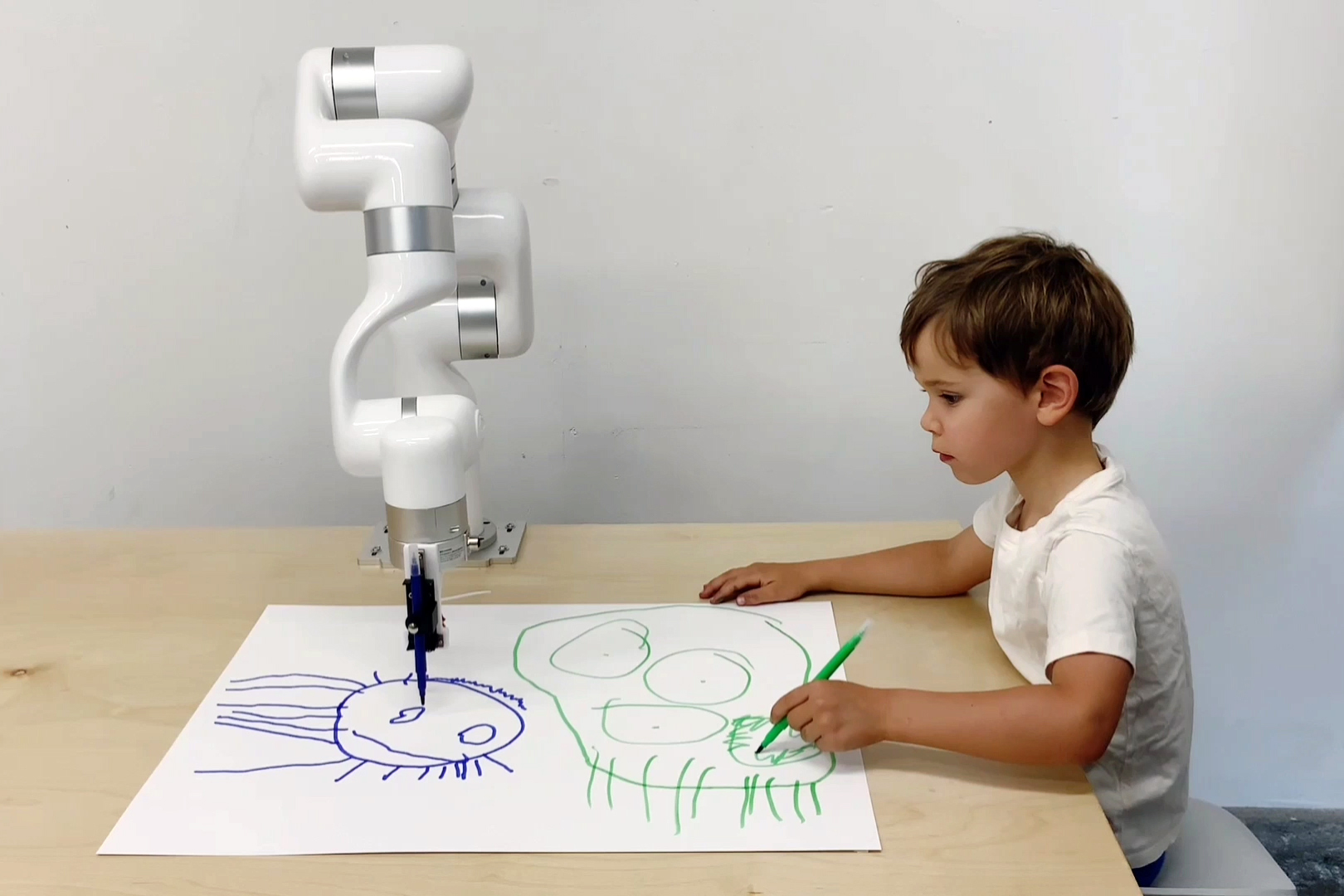“Three Stage Drawing Transfer” by Twomey
Conference:
Type(s):
Entry Number: 04
Title:
- Three Stage Drawing Transfer
Presenter(s)/Author(s):
Abstract:
Three Stage Drawing Transfer is an experimental human-robot performance and emerging media arts research project exploring drawing, cognition, and new possibilities for creative, embodied interactions between humans and machines. The work creates a visual-mental-physical circuit between a Generative Adversarial Network (GAN), a co-robotic arm, and a five-year-old child. Building on traditions from experimental performance and collaborative drawing, it extends these with the emergent capabilities of generative neural networks and robotic automation. The live child-robot interaction occurs within the space of a shared sheet of paper, where they together develop a collaborative drawing guided by the GAN’s understanding and the child’s imagination, resulting in a drawing as artifact and video as documentation.
References:
Tero Karras, Samuli Laine, Miika Aittala, Janne Hellsten, Jaakko Lehtinen, and Timo Aila. 2020. Analyzing and Improving the Image Quality of StyleGAN. In Proceedings of the IEEE/CVF Conference on Computer Vision and Pattern Recognition (CVPR). Google ScholarCross Ref
Rhoda Kellogg. 1969. Analyzing children’s art. National Press Books, Palo Alto, Calif.Google Scholar
Dennis Oppenheim. 1971. 2-Stage Transfer Drawing. Retrieved January 21, 2022 from https://www.dennisaoppenheim.org/copy-of-new-pageGoogle Scholar




